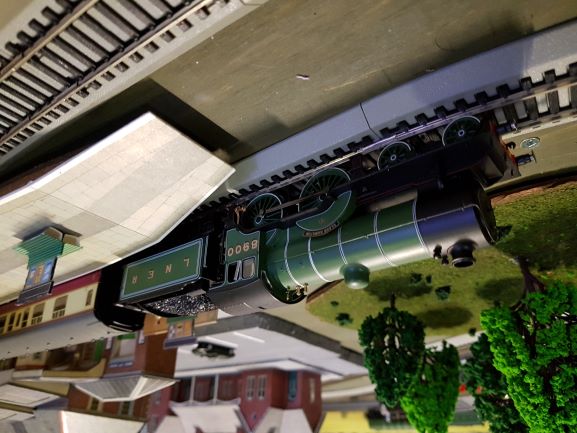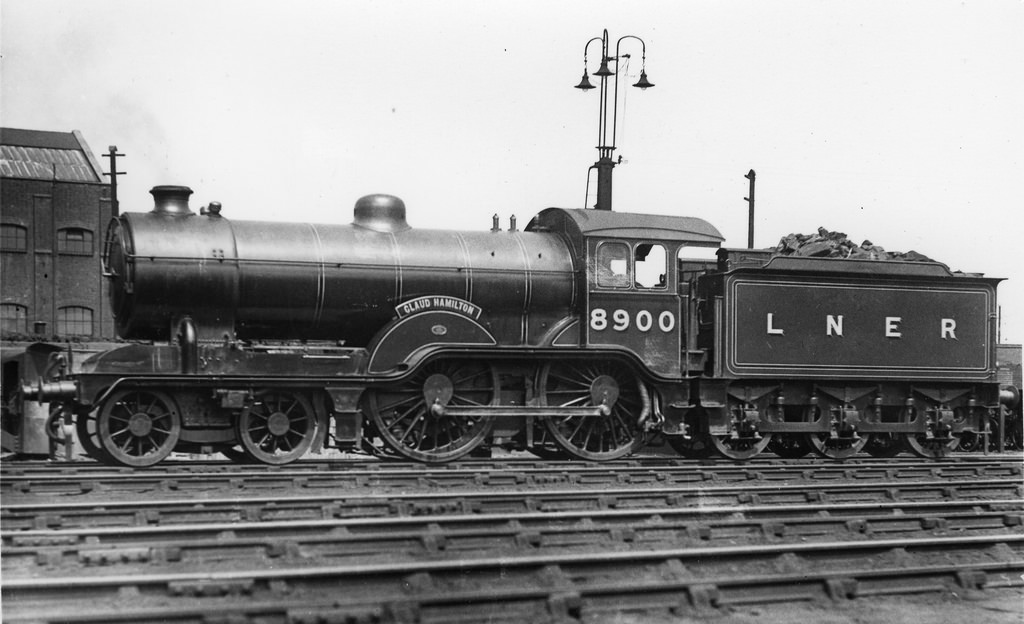
Steve's Model Railway Site
My British Model Railway Locomotives
Claud Hamilton



This is my lovely HO scale LNER P16 4-4-0 Claud Hamilton steam locomotive originally built from 1900 to around 1933.
Operated by the Great Eastern Railway (GER) and later London and North Eastern Railway (LNER) these locomotives operated where I grew up between London, Cambridge and Colchester. The first of its type was named after the Chairman of GER Claud Hamilton and the name Claud stuck to all locomotives of the class right until the last Claud was withdrawn in 1960. Built at Stratford the Stratford Works Chief Draughtsman Frederick V. Russell was responsible for most of the design work. Claud Hamilton was built to GER order (and class) S46. Although it kept the GER standard sized 7ft driving wheels, it had a large round-topped 4ft 9in boiler. A spacious cab was fitted with two side windows. Well proportioned, Claud Hamilton was a very attractive locomotive in its GER Royal Blue livery, and it quickly won a gold medal at the 1900 Paris Exhibition.
When introduced, the Claud Hamiltons were the largest and most powerful express locomotives on the GER. They were quickly put to work on the principal express services, including passenger trains from London to Ipswich, Norwich, Cromer, Clacton, and the boat trains to Parkeston Quay.
At Grouping (1923), the Clauds (D14 and D15) were allocated to Stratford (35), Ipswich (19), Cambridge (19), Norwich (15), Colchester (6), Yarmouth (5), March (5), Parkeston (3), King's Lynn (2), Lowestoft (1), and Doncaster (1). Note that Cambridge quickly acquired a large allocation, considering it never had any Clauds for the first ten years or so.
With the exception of moving locomotives from shed to shed, double-heading was usually prohibited on the GER. By the 1920s, double-headed Clauds were authorised and scheduled for the constantly growing morning expresses from Clacton and Walton. These remained double-headed until 1930, when B12s were permitted to work into Clacton.
From 1924, Clauds were occasionally seen on GNR routes into King's Cross for special passenger services. Typically these would be Royal Trains to Cambridge or King's Lynn. King's Cross to Cambridge workings were greatly extended in 1932 with five Claud-hauled expresses per weekday. Most of the locomotives for these services were provided by the Cambridge shed which was not prepared for the motive power requirements. GNR Atlantics (C1 and C2) were drafted in to help, but Clauds would continue to haul many of these services until 1938. No. 62613 was the last Claud D16/3 to be withdrawn from service in September 1960 from March shed.
Further reading:-
The Holden Claud Hamilton Class D14, D15, & D16 4-4-0 Locomotives
